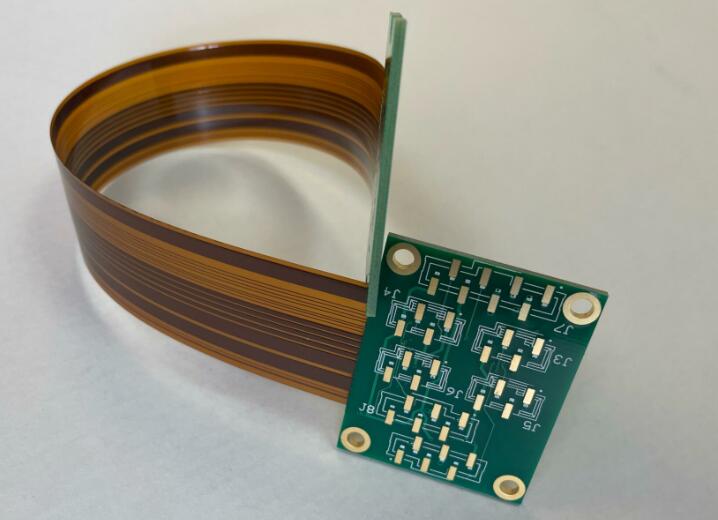FPC connector is the abbreviation for flexible circuit board connector, which is characterized by flexibility and foldability, allowing it to connect in narrow spaces and possessing strong resistance to vibration and fracture.

FPC connectors are made of conductive metal film materials, mainly including wires, protective layers, and connector seats.
The wire section is made of highly conductive metal materials, such as copper, silver, or gold, to ensure stable signal transmission.
The protective layer is used to protect the wire from the influence of the external environment, improving the reliability and lifespan of the connector.
The connector seat is the interface part that connects electronic devices and flexible circuit boards, and its shape and structure ensure a stable and reliable connection.
FPC connectors have many advantages, first of all, their flexibility.
1) Due to the foldability of flexible circuit boards, FPC connectors can adapt to electronic devices of different shapes and sizes, better meeting the requirements of product design.
2) Secondly, FPC connectors have electromagnetic shielding performance, which can effectively reduce interference and signal loss.
3) In addition, FPC connectors also have high transmission rates and low insertion and removal forces, making them widely used in high-speed transmission and frequent connection scenarios. FPC connectors have a wide range of applications, with the most common being mobile communication devices such as smartphones and tablets.
The main function of FPC connectors is to achieve electrical connections between circuit boards and flexible printed circuit boards (FPCs), as well as to provide necessary mechanical stability for electronic devices. Its structure consists of the following parts:
1) Rubber core: The rubber core of FPC connectors plays a role in protecting terminals, insulation, conducting during connection, and providing structural strength. The manufacturing process generally adopts injection molding technology, and the materials are mostly PA9T, etc.
2) Tongue: The tongue of FPC connectors is mainly used for crimping, insulation, conducting during connection, and providing structural strength. The manufacturing process generally adopts injection molding technology, with materials such as PA10T and PPS.
3) Terminals: The terminals of FPC connectors are mainly responsible for the conductor transmission of electronic signals. The manufacturing process adopts stamping and electroplating technology, and the materials are usually phosphorus bronze C5191, etc.
4) Welding pads: Welding pads for FPC connectors are used for component positioning, fixing, and increasing strength. The manufacturing process also uses stamping and electroplating technology, and materials such as bronze C2680 are used.
FPC connectors can be classified into different types based on different classification methods
According to structural characteristics, it can be classified into SMT FPC connectors and DIP FPC connectors.
1) SMT FPC connectors use holes and metalized areas on flexible circuit boards and are connected to the PCB board through metal pins or terminals. They have the advantages of small space occupation, lightweight, and easy assembly.
2) DIP FPC connectors connect flexible circuit boards and PCB boards through terminals or metal sleeves, providing higher connection reliability.
2. According to the connection method, it can be classified into plug-in FPC connectors, flip-over FPC connectors, and unlocked connectors.
1) The plug-in FPC connector uses a pluggable method to connect flexible circuit boards and PCB boards, which has the advantages of easy replacement and maintenance but also has connection reliability issues.
2) The flip-type FPC connector connects the flexible circuit board and PCB board by pressing the cover, which has higher connection reliability.
3) Unlocking FPC connectors connect flexible circuit boards and PCB boards through the pressure at the contact points of two terminals.
3. According to the PCB matching method, it can be divided into SMT type and pin insertion type. SMT uses solder pads on the surface of the board, prints solder paste temporarily attaches the part feet, and then passes through a reflow furnace to become solder joints. Pin insertion DIP punching holes on the PCB board, threading connector pins through the holes on the circuit board, and then soldering them in place.
4. According to insertion force, it can be divided into ZIF (zero insertion force) and Non-ZIF (low insertion force).
5. According to the direction of the frame opening, it can be divided into horizontal and vertical types. Horizontal frame with a lateral opening, with cables inserted into the connector from the lateral direction, divided into upper contact, first contact, and double contact types; The vertical frame is facing upwards, and the ribbon cable is inserted from above the connector.
FPC connectors have good electrical performance and can reduce signal interference and distortion during signal transmission. Compared to other connectors, the metal wires of FPC connectors are less prone to breakage and have lower contact resistance, thus ensuring the stability and reliability of signal transmission. FPC connectors can connect signal transmission between different electronic device boards, achieving communication between different boards.